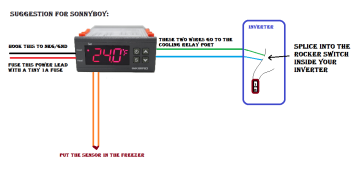efficientPV
Solar Addict
- Joined
- Sep 24, 2019
- Messages
- 1,348
I have 3,000W of panels on a 500W controller. That works for me because 70% of panels are shaded at any time. My east facing panels are great for recovery in the morning and it flattens production all day. I run a whole house, dishwasher, hot water, laundry, etc, besides refrigeration on a single car battery. On overcast days every panel produces some power and refrigeration can run for days in clouds with no problem. This is what can be done when you design with purpose.



